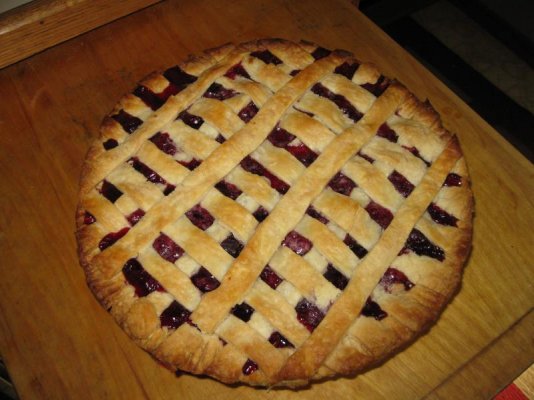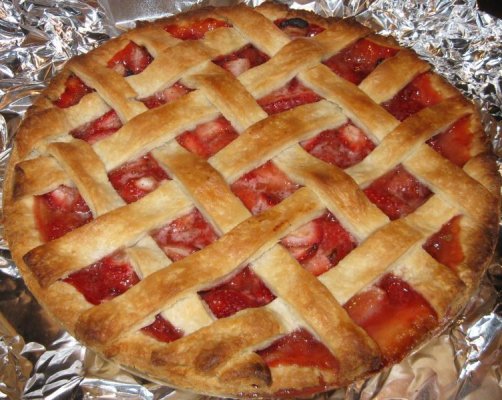I've tried my hand at pie baking a few times in the last several months and I wanted to share some tricks I learned - many people on here probably already know about these...but I thought I'd share anyway! Anyone care to join me?
Fruit pies - absolutely nothing beats fresh fruit. I've never in my life liked fruit pies but I have since learned I LOVE fresh fruit pies.
Cherry is the best but it is a HECK of a lot of work!
For the flaky crust... (and I would love more tipes on this)
I put the pie plate in the fridge when I start. I also put dough in the fridge when I am not handling it. So, it's lots of trips back and forth to the fridge, but worth it.
I learned that an egg wash on the bottom of the crust, before adding filling, keeps the crust crusty and not soggy.
Finally, to keep shape, use the max amount thickener called for the recipe.
Pics attached...I would still like to make this flakier - suggestions?
Fruit pies - absolutely nothing beats fresh fruit. I've never in my life liked fruit pies but I have since learned I LOVE fresh fruit pies.
Cherry is the best but it is a HECK of a lot of work!
For the flaky crust... (and I would love more tipes on this)
I put the pie plate in the fridge when I start. I also put dough in the fridge when I am not handling it. So, it's lots of trips back and forth to the fridge, but worth it.
I learned that an egg wash on the bottom of the crust, before adding filling, keeps the crust crusty and not soggy.
Finally, to keep shape, use the max amount thickener called for the recipe.
Pics attached...I would still like to make this flakier - suggestions?


